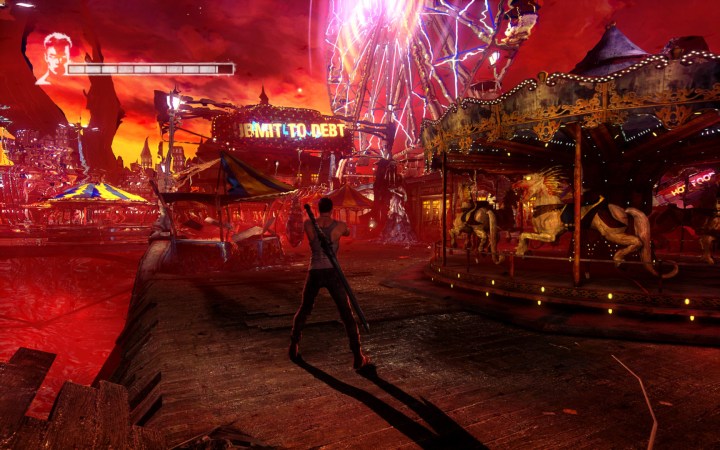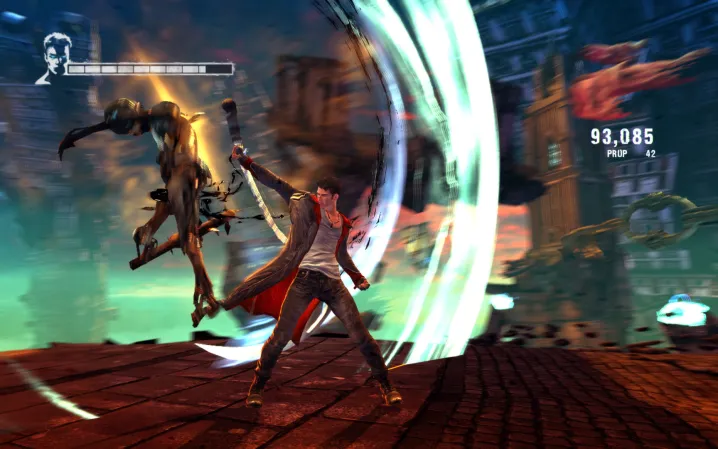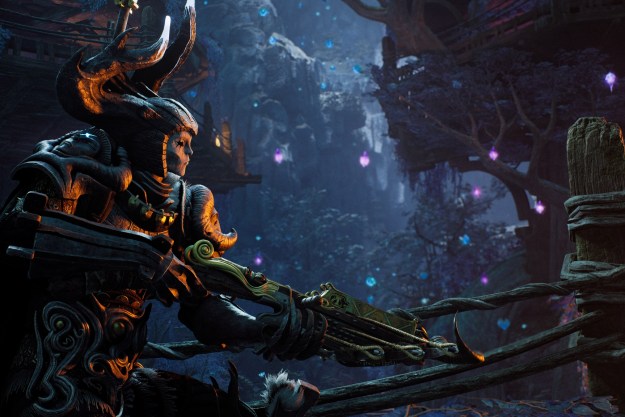Devil May Cry 5 is out in the wild, and the game is receiving critical acclaim from just about every gaming outlet. It’s brash, it’s irreverent, and it absolutely oozes cheese, with its three playable characters bringing diversity to gameplay that we haven’t seen in an action game before. Devil May Cry 5 is my favorite game of the year thus far, but it should not overshadow the greatness of its predecessor. No, I’m not talking about Devil May Cry 4, but Ninja Theory’s western reimagining, DmC: Devil May Cry.
DmC: Devil May Cry was a tough sell for Ninja Theory and Capcom. It wasn’t developed by Capcom’s internal team or director Hideaki Itsuno, the latter of whom served only as a supervisor for the project. It would release nearly five years after Devil May Cry 4, leaving longtime fans without a continuation of its story and no clear plan for its future. These problems only made the pill harder to swallow when they saw the radically redesigned look for protagonist Dante.

Gone was Dante’s famous white hairdo, replaced with a short, brown crew cut. His clothing style was influenced by more modern fashion than the original character, with skinny jeans and a less comical overcoat, and his rebellious attitude was more pronounced. Early trailers also made him excessively skinny, as if he had come directly off a three-day amphetamines bender to send demons back to hell.
Deceiving appearances
If DmC: Devil May Cry really leaned into these superficial elements in the actual game, it would be easy to see why it received such a harsh reaction. That isn’t the case, though. Aside from one jab at Dante’s original hairstyle, it doesn’t explicitly contrast itself to the original games. Instead, it uses their themes as inspiration for its own story, more grounded in anti-consumerism and revolting against right-wing philosophy than in over-the-top spectacles. The crazy, gore-heavy boss fights are still there, but demons are more than just executable foes. They’re metaphors for the current twisted state of society.
This design choice extends into the environments, as well, which morph to reveal their “true” forms as Dante approaches them. Buildings crumble and cave in to reveal demons hiding in wait, and the world itself often seems more out to get Dante than any of its creatures. Carpenter’s They Live was a clear source of inspiration, but the closest comparison in the medium is 2014’s The Evil Within, where a seemingly peaceful world is just one step away from distorting itself to unleash chaos.
It’s message is even more important in 2019, as we look to “demonize” others without an ounce of self-reflection or critical thinking.
Yes, perhaps this Dante is just one makeup job away from turning into Jared Leto’s laughable Joker, but DmC: Devil May Cry actually has something to say. In its world, energy drink consumption has left us endlessly anxious. Propaganda masquerading as news has us unsure of the truth, making it easy to vilify people who have done nothing wrong. The message had value in 2013, but it’s even more important in 2019, as we look to “demonize” others without an ounce of self-reflection or critical thinking.

More than just its topical relevance, DmC: Devil May Cry excels at telling a story with subtlety, something the original series is not interested in. That’s perfectly fine for those games, but Ninja Theory’s climactic end sees Dante and Vergil discover the differences in their respective philosophies. Both are interested in protecting humanity but disagree on the approach. While Vergil wishes to “rule” humankind, Dante believes in their freedom.
In a world where people left to their own devices kill each other and start global conflicts, Dante is still pretty clearly in the right with his call for non-intervention, but this doesn’t lead to Vergil’s portrayal as evil or outright malicious figure. He is not simply a “reboot” of the Devil May Cry 3’s character, but a different version of him entirely.
Still Devil May Cry
Ninja Theory took an undeniably simpler approach to the combat, as well. This Dante doesn’t use eight different weapons or ram a literal motorcycle into the demons he fights. Instead, DmC: Devil May Cry features smooth transitions from one ability to the next. Switching from the Rebellion sword to his gauntlets or scythe allow for some clever combo attacks, and with certain enemies color-coded to show weakness to angelic or demonic abilities, it forces players to change up their strategies.

There’s a small bit of irony to the backlash DmC: Devil May Cry received.
In a way, the reimagined version of Dante plays like a combination of Devil May Cry 5’s Nero and Dante characters. He has the versatility, speed, and flair of Dante, but with the power and traversal abilities of Nero. As Dante is the only protagonist in DmC, Ninja Theory had to accommodate several combat styles in just one character, and the results are phenomenal. Zipping from demon to demon with his grapple ability before juggling and pummeling with his sword and gauntlet feel amazing, and on par with any of the Capcom-developed games.
There’s a small bit of irony to the backlash DmC: Devil May Cry received. While NinjaTheory was criticized for changing the series to the point of being unrecognizable, the original Devil May Cry began as a sequel in the Resident Evil series, with its name later changed as it was reworked into its own franchise. DmC can largely be viewed in this same way today, as Capcom has not ignored the original games in favor of its alternate-universe title. In fact, the opposite has largely been true. There’s been no news of a sequel, and the likelihood of it is especially slim now that Ninja Theory is a Microsoft-owned studio.
It would certainly be a shame if there was no room for both the original and the DmC franchises to exist. While one deals with the completely fantastical, the other works in allegory and symbolism, with neither stepping on the other’s toes. It’s a dream at this point, despite the sequel-teasing at the end of DmC: Devil May Cry, but if you’ve held off on playing Ninja Theory’s masterpiece, you just might find yourself surprised by how deserving it is of the Devil May Cry name.


